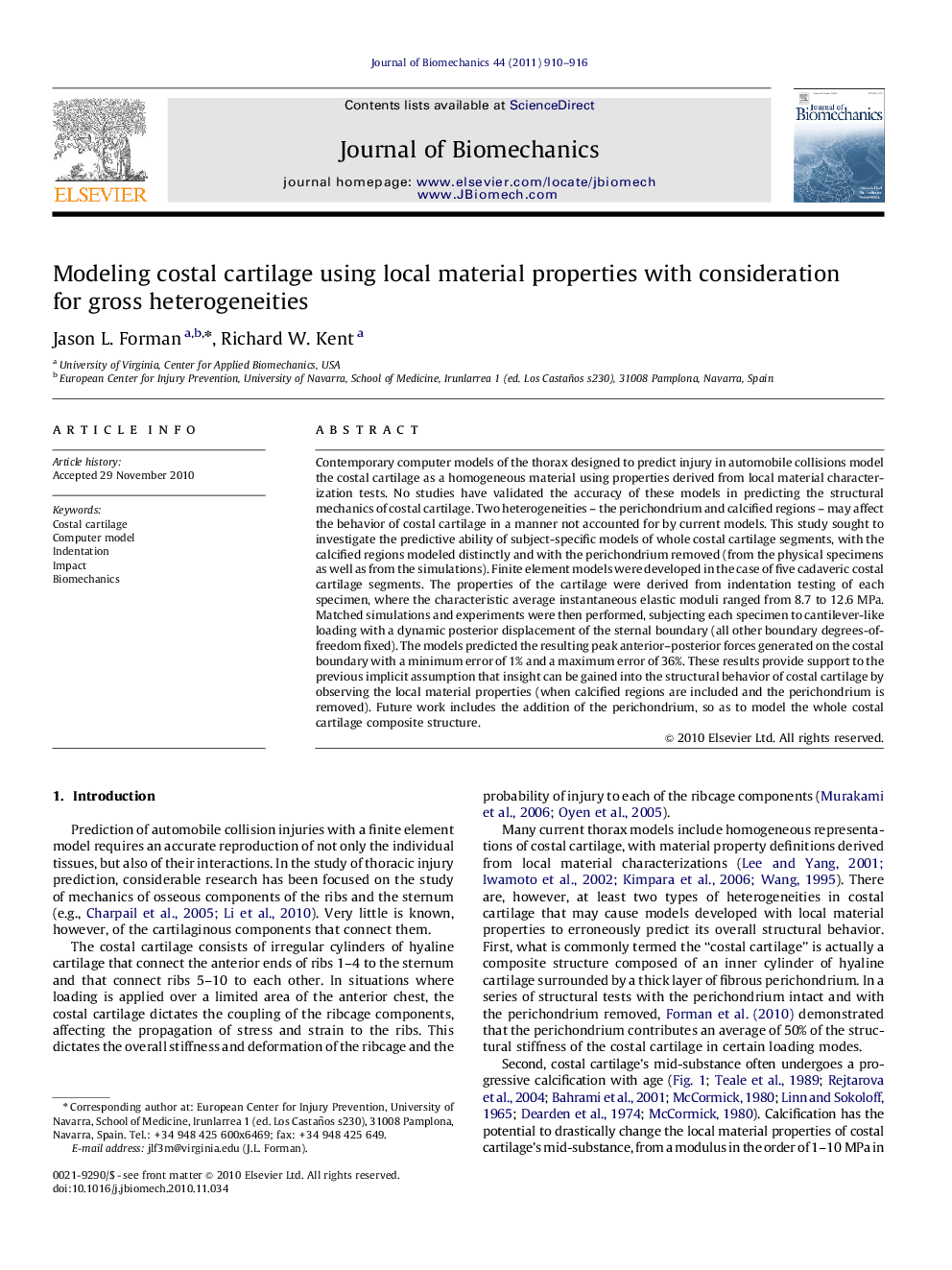| Article ID | Journal | Published Year | Pages | File Type |
|---|---|---|---|---|
| 10432852 | Journal of Biomechanics | 2011 | 7 Pages |
Abstract
Contemporary computer models of the thorax designed to predict injury in automobile collisions model the costal cartilage as a homogeneous material using properties derived from local material characterization tests. No studies have validated the accuracy of these models in predicting the structural mechanics of costal cartilage. Two heterogeneities - the perichondrium and calcified regions - may affect the behavior of costal cartilage in a manner not accounted for by current models. This study sought to investigate the predictive ability of subject-specific models of whole costal cartilage segments, with the calcified regions modeled distinctly and with the perichondrium removed (from the physical specimens as well as from the simulations). Finite element models were developed in the case of five cadaveric costal cartilage segments. The properties of the cartilage were derived from indentation testing of each specimen, where the characteristic average instantaneous elastic moduli ranged from 8.7 to 12.6Â MPa. Matched simulations and experiments were then performed, subjecting each specimen to cantilever-like loading with a dynamic posterior displacement of the sternal boundary (all other boundary degrees-of-freedom fixed). The models predicted the resulting peak anterior-posterior forces generated on the costal boundary with a minimum error of 1% and a maximum error of 36%. These results provide support to the previous implicit assumption that insight can be gained into the structural behavior of costal cartilage by observing the local material properties (when calcified regions are included and the perichondrium is removed). Future work includes the addition of the perichondrium, so as to model the whole costal cartilage composite structure.
Related Topics
Physical Sciences and Engineering
Engineering
Biomedical Engineering
Authors
Jason L. Forman, Richard W. Kent,
